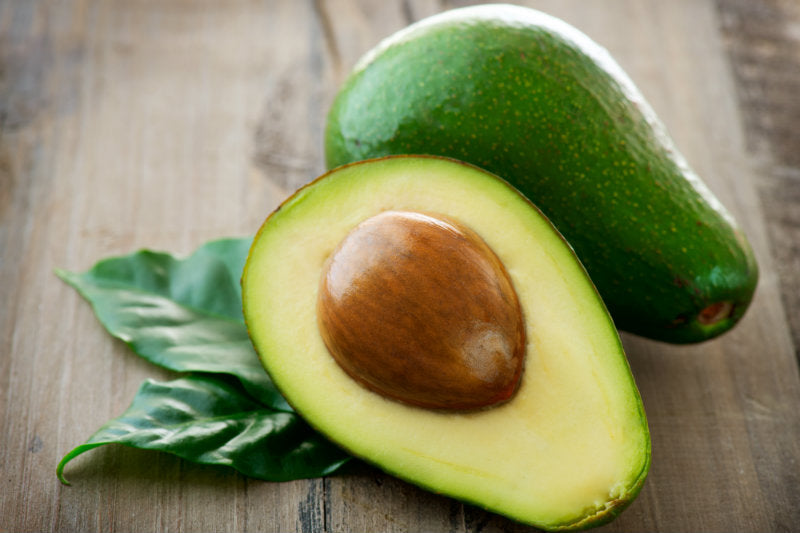Should I quit sugar? A common question you’ve likely asked yourself with the rise of the ‘quitting sugar’ movement. Understanding if this is a trend or a truly healthy option can be confusing with so many mixed messages online and in the media. Luckily, our expert opinions will have all of your sugar questions answered.
What is sugar?
Sugar isn’t just the white stuff we use in baking or sprinkle into our cappuccinos. Sugar comes in many different forms, it has many varying guises and is found in both healthy and less desirable, heavily-processed foods and drinks.
Sugars are small units that are mostly derived from plants.
On the molecular level, the simplest forms of sugar - monosaccharides, are the building blocks of specific carbohydrates, similar to how amino acids form protein. When sugars exist in this form it is often called ‘simple carbohydrates’.
Sugars that find their way into our diet can essentially be classified into two groups - free or intrinsic.
Free sugars
According to The World Health Organisation (WHO)1, free sugars are the small molecules (monosaccharides and disaccharides) that have been added to food or drink during processing, manufacturing and cooking. For example, glucose, sucrose (table sugar), fructose, molasses and syrups are all free sugars.
WHO1 also classifies the naturally occurring sugar found in honey, fruit juice and juice concentrate as free sugars.
Because free sugars are frequently added during food manufacturing so they are commonly called ‘added sugars’.
Intrinsic sugars
The sugars that are found naturally in whole foods like fruit, vegetables, milk, cheese and yoghurt are called intrinsic sugars.
Intrinsic sugars are bound with many other components like fibre, vitamins, minerals and water to make a whole food. These whole foods are often referred to as ‘complex’ carbohydrates as their chemical structure is considered to be more complex.
Sugar and my health
Apart from obesity and dental cavities1, the majority of research regarding sugar and adverse health effects shows an association with sugar sweetened beverages, meaning that we can see that sugar is involved in many systemic disease states and disorders including mental health disorders like depression, obesity, metabolic disorders like diabetes, non-alcoholic liver disease, cardiovascular diseases and poor oral health2,3,4,5.
The true mechanisms behind the association of sugar and poor health, and to what degree, is another question, and much of these questions relate to chronic low grade inflammation.
WHO1 states that higher intakes of free sugars threatens the nutrient quality of the diet by providing significant energy without specific nutrients. This is why sugar and sugary food products are often referred to as ‘empty calories’.
Excessive energy intake can lead to unhealthy weight gain. Consuming just one can (375ml) of regular soft drink per day could lead to a weight gain of more than 5kg in one year, if you don't burn off the extra energy6.
Uncontrolled weight gain can lead to obesity. Obesity is a strong risk factor for diabetes, cardiovascular disease and some cancers (including endometrial, oesophageal, renal, gallbladder, bowel and postmenopausal breast cancers)7.
With the bigger picture in mind, it’s important to recognise that disease and health conditions are complex with many risk factors - some that you can modify and some that you cannot. Your risk for developing some of the above aforementioned diseases can be significantly reduced by adopting healthy lifestyle practices including eating a balanced whole food diet with adequate vegetables and fruit, reducing your sugar intake, quitting smoking, getting enough sleep, exercising regularly and managing stress.
Should I quit sugar?
Despite popular belief, it can be very difficult to completely cut out all sugar from the diet.
Sugars are found in many items, not just food and drinks but also common medications. A diet that completely cuts out all types of sugar would be nutritionally incomplete, as all fruits, dairy and most vegetables and whole grains contain various amounts of intrinsic sugars. These whole food items also contain beneficial fibre, vitamins, minerals, antioxidants and phytochemicals. Nutritional deficiencies could arise if these foods were excluded from your diet in efforts to quit all sugar.
Going back to the previous definitions, free sugars are different from intrinsic sugars, like those sugars found in whole fresh fruits and vegetables. WHO1 states that there is no reported evidence linking the consumption of intrinsic sugars to adverse health effects. Therefore, the consumption of intrinsic sugars present in whole fresh fruits and vegetables do not need to be avoided and the Australian Dietary Guidelines8 encourages five serves of vegetables and two serves of whole fruit daily.
How much sugar can I have?
There is no exact quantity because we are all different in size, shape and health profile.
According to WHO1, free sugars should be further limited to provide 5% of total energy in the diet. For example, an average sized female may require 2,000 calories per day. So, 5% of 2,000 calories equates to 100 calories of energy from free sugars. This is about 25g of free sugars (as 1g of sugar provides 4 calories). To put this into perspective, you will reach your daily limit of 25g of free sugars by drinking only one glass (250ml) of cola soft drink.
According to the Australian Bureau of Statistics9, between 2011-12 Australians consumed an average of 60g of free sugars per day (equivalent to 14 teaspoons of white sugar).
As a nation, we seem to be consuming too much sugar10. Rather than quitting sugar completely, the best approach would be to limit your intake of free sugars and eat nutritious foods that provide an appropriate amount of overall energy to support exercise, muscular strength and a healthy body weight.
How can I reduce my sugar intake?
Identifying how free sugars get into your diet is the first step to reducing your intake.
WHO1, World Cancer Research Fund11 and Australian Dietary Guidelines8 all agree we need to limit the amount of sugar in our diets. Collectively, they recommend that sugary drink consumption be restricted or avoided altogether.
Try these strategies to help you identify and reduce sugar:
-
Read the label on all packaged foods. Added sugars will be listed in the ingredients and on the nutrition information panel
-
Choose ‘no added sugar’ alternatives to your usual food products like natural yoghurt, sauces, condiments and canned or bottled products
-
Quit adding table/raw/brown sugar to your coffee, tea or breakfast cereal
-
Reduce or cut out sugar from recipes. Choose alternative sweeteners like stevia, xylitol or whole fruit. There are plenty of sugar-free recipes online but make sure the recipe isn’t just swapping out caster sugar for another type of free sugar such as raw sugar or a syrup
-
Water is the best choice but soda water or sparkling mineral water with a squeeze of citrus and mint leaves is a tasty alternative to soft drink, cordial, fruit concentrates and alcohol
-
Unless you are very active, limit your intake of dried fruit and fruit juice, as it is very concentrated in natural sugar and may have had more sugars added during manufacturing
Simple Swaps
| High in sugar | Better choice |
| Regular soft drink | Sparkling mineral water with a squeeze of citrus and mint leaves |
| Flavoured iced coffee | Long black or cold drip coffee |
| Flavoured yoghurt | Natural Greek yoghurt, no added sugar varieties, and serve with whole berries for sweetness |
| Fruit juice concentrate | Fresh coconut water |
| Dried fruit | Fresh whole fruit |
| Granola | Homemade muesli - rolled oats, chopped nuts, seeds and coconut |
| Tomato and BBQ sauce | Homemade or no added sugar varieties |
| Table sugar | Stevia |
| Jam | Natural nut butter |
Key messages
-
There are many forms of sugar and most are derived from plants. Sugars in their most simple forms are often called ‘free sugars’, ‘simple sugars’, ‘simple carbohydrates’ or ‘added sugars’.
-
Free sugars include glucose, sucrose, fructose, high fructose corn syrup, fruit concentrates, syrup and honey.
-
Free sugars are the ones to limit as their consumption contributes to overall energy density without adding beneficial nutrients. Hence the term ‘empty calories’.
-
Excessive intake of free sugars and products with lots of added sugar can create a dietary imbalance. Too much energy in without expenditure (from physical activity) can lead to weight gain, increased fat mass and obesity.
-
Intrinsic sugars are found naturally in whole foods like fruit, vegetables, milk, cheese and yoghurt. According to The World Health Organisation, consumption of these sugars do not need to be restricted.
-
If you decide to quit sugar completely, including intrinsic sugars, then you could be missing out on other essential vitamins, minerals, phytochemicals and fibre from whole foods that contain natural intrinsic sugars. Instead, aim to minimise free sugars in your diet.
-
Sugar has been associated with many systemic disease states and adverse health effects. It’s important to remember that diseases are complex with many risk factors, some you cannot change, and therefore one component like sugar cannot be solely to blame.
-
Adopting healthy lifestyle practices including reducing your sugar intake is one way to reduce your risk. Others include eating a balanced whole food diet with adequate vegetables and fruit, quitting smoking, getting enough sleep, exercising regularly and managing stress.
.jpg)
References
-
Guideline: Sugars intake for adults and children. Geneva: World Health Organization; 2015.
-
Yu, Z., Ley, S., Sun, Q., Hu, F., & Malik, V. (2018). Cross-sectional association between sugar-sweetened beverage intake and cardiometabolic biomarkers in US women. British Journal of Nutrition, 119(5), 570-580. doi:10.1017/S0007114517003841
-
Hoare, E., Varsamis, P., Owen, N., Dunstan, D. W., Jennings, G. L., & Kingwell, B. A. (2017). Sugar- and Intense-Sweetened Drinks in Australia: A Systematic Review on Cardiometabolic Risk. Nutrients, 9(10), 1075. http://doi.org/10.3390/nu9101075
-
Imamura, F., O’Connor, L., Ye, Z., Mursu, J., Hayashino, Y., Bhupathiraju, S. N., & Forouhi, N. G. (2016). Consumption of sugar sweetened beverages, artificially sweetened beverages, and fruit juice and incidence of type 2 diabetes: systematic review, meta-analysis, and estimation of population attributable fraction. British Journal of Sports Medicine, 50(8), 496–504. http://doi.org/10.1136/bjsports-2016-h3576rep
-
Knüppel, A., Shipley, M. J., Llewellyn, C. H., & Brunner, E. J. (2017). Sugar intake from sweet food and beverages, common mental disorder and depression: prospective findings from the Whitehall II study. Scientific Reports, 7, 6287. http://doi.org/10.1038/s41598-017-05649-7
-
Apovian CM. Sugar-sweetened soft drinks, obesity, and type 2 diabetes. Journal of the American Medical Assocation 2004; 292(8): 978-9.
-
Cancer council Victoria. 2018. Online via Rethink Sugary Drink website: http://www.rethinksugarydrink.org.au/for-professionals/key-messages.html
-
National Health and Medical Research Council (2013) Australian Dietary Guidelines. Canberra: National Health and Medical Research Council.
-
Australian Bureau of Statistics. 2016. Australian Health Survey: Consumption of Added Sugars: Australia, 2011-12, 4364.0.55.011Commonwealth of Australia. Online:http://www.abs.gov.au/AUSSTATS/abs@.nsf/Lookup/4364.0.55.011Main+Features202011-12?OpenDocument
-
Linggang Lei, Anna Rangan, Victoria M. Flood and Jimmy Chun Yu Louie. 2016. Dietary intake and food sources of added sugar in the Australian population. British Journal of Nutrition. Volume 115, Issue 5, pp. 868-877.
-
World Cancer Research Fund. Cited online June 2018 via https://www.wcrf.org/dietandcancer/cancer-prevention-recommendation



.jpg)

